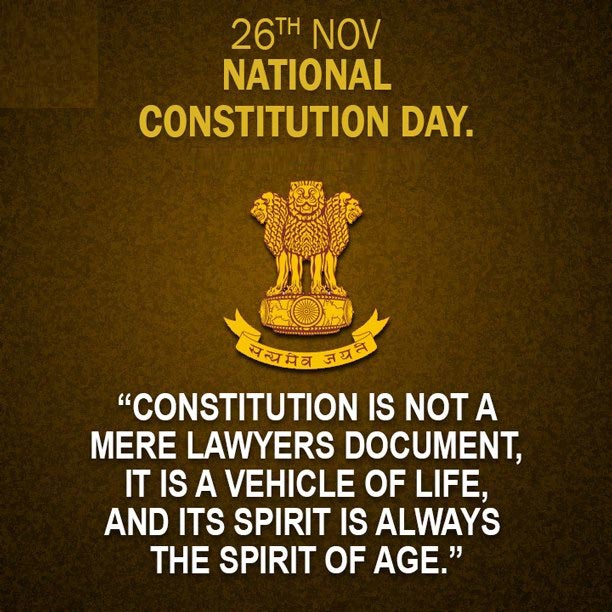Constitution Adoption Day: 10 things you need to know about Indian Constitution

Here are 15 essential things that you need to know about the Constitution Adoption Day
The Constitution of India was adopted on November 26 and came into effect on January 26. November 26 is celebrated as constitution adoption day. It is also known as Samvidhan Divas. The Indian Constitution is the supreme rulebook that lays down all the essential instructions that need to be followed by the government of India for governance. Before the Independence of India, the Britishers made rules, and they were known as Acts. Notably, their acts were biased. When our constituent assembly was formed in 1946, many debates happened before the leaders finally came up with a final draft. It was adopted on November 26, 1949, and came into effect on January 26, 1950.
Here are 15 essential things that you need to know about the Constitution Adoption Day
1. After the Constitution was passed, the historic session of the Constituent Assembly concluded with the singing of the National Anthem, “Jana- Gana -Mana
2. November 26 was declared Constitution Day on November 19, 2015, by the government of India. Notably, there is no public holiday on this day.
3. The Constitution’s draft was prepared under BR Ambedkar’s guidance. According to the government notification, the day is also a tribute to Ambedkar.
4. Notably, this day was celebrated as National Law Day after a resolution by the Supreme Court Bar Association, a lawyers’ body, in 1979.
5. When the constitution draft was first put for debate and discussion, over 2000 amendments were made.
6. The handwritten Constitution was signed on January 24 1950, by 284 constituent assembly members. It included 15 women and came into effect on January 26, 1950.
7. Our Constitution has taken inspiration from so many other countries. For example, the idea of the five-year plan was borrowed from the USSR.
8. Liberty, Equality and Fraternity ideals in our preamble have been taken from the French Revolution. It is also the French Motto.
8. It is the longest-written Constitution. As of now, it has undergone a total of 100 amendments.
9. The original copy of the Constitution, written in Hindi and English, is kept in helium-filled cases in the Library of Parliament.
10. The idea of fundamental rights was borrowed from the United States of America.
11. On December 9 1946, The Constituent Assembly started its first session for the Constitution.
12. 17 committees were formed in the Constituent Assembly.
13. For 165 days, the Constituent Assembly meetings were held.
14. Two hundred ninety-nine members were present in the Constituent Assembly, of which 15 were women.
15. It took two years, 11 months, and 17 days to finish the Constitution.

The Constitution is a core legal document which lists the fundamental rights of citizens, their duties, the role of the government, interaction between the government and its citizens. It also consists of the powers of the prime minister, president, governor and chief minister and defines how the country’s federal structure will be maintained.
This document, with nearly 400 articles and provisions, also defines the powers of the legislature, the executive and the judiciary. Separation of powers while keeping a check on each arm of the government is a crucial feature of the Constitution – something that the finance minister Arun Jaitley says has eroded because of judicial activism.
The Indian Constitution drafter has borrowed concepts and ideas from the (constitutions of) the UK, US, (Ireland) Irish, (Germany) German, (Australia) Australian, (Canada) Canadian and (Japan) Japanese constitutions.







